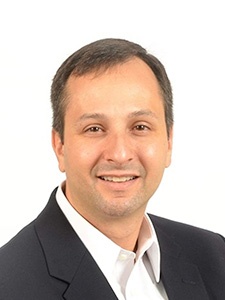 At the APEX TECH conference in Los Angeles in June, SmartSky Networks’ President, Ryan Stone, participated on a connectivity panel with representatives from Inmarsat, ViaSat, Gogo, and Panasonic Avionics. We asked Ryan to share his thoughts on the panel and provide some insight into ATG in Commercial Aviation as APEX EXPO approaches. You can read Ryan’s Pre-APEX TECH Interview on the APEX website here: https://apex.aero/2017/06/06/pre-apex-tech-interview-smartsky-president-when-open-kimono
At the APEX TECH conference in Los Angeles in June, SmartSky Networks’ President, Ryan Stone, participated on a connectivity panel with representatives from Inmarsat, ViaSat, Gogo, and Panasonic Avionics. We asked Ryan to share his thoughts on the panel and provide some insight into ATG in Commercial Aviation as APEX EXPO approaches. You can read Ryan’s Pre-APEX TECH Interview on the APEX website here: https://apex.aero/2017/06/06/pre-apex-tech-interview-smartsky-president-when-open-kimono
What did you learn from the other panelists?
The future is going to be pretty exciting, as the pace of technology change is accelerating. Many companies are developing new software-based applications to take advantage of better connectivity. These advances should significantly improve the passenger experience.
Big Data and the Internet of Things are knocking on aviation’s door, which will mean more data will need to come off airplanes than ever before. At the same time, as expectations continue to rise, passengers do not care about “details” related to radio physics limitations and frequency bands, they just want their devices in the air to work exactly as they do on the ground.
These trends, not just with improving connectivity provider capabilities but in the rapidly evolving underlying use-cases, make it tough on airlines since they are making connectivity buying decisions that need to account for their needs today and for the next ten years.
Finally, we also discussed the possibility of developing a standardized way to measure performance across connectivity platforms.
What is SmartSky’s differentiator?
Amazing internet that goes in both directions, real-time, like it was intended. We will deliver the connected experience passengers have long expected but never seen in practice until now; turning airborne internet from a novelty into a necessity by delivering the same experience in the air that people have on the ground. This means you, as a user, will be able to upload Facebook, use your corporate cloud, do online gaming, utilize your VPN, share your experiences on Snapchat, attend a WebEx, and watch your streaming video. Besides passenger entertainment, these same traits will change the game on the airline operational side as well, which is why we have also spent quite a bit of time on launching our SkyTelligence initiative.
To get a bit more technical, we have developed and demonstrated the only service that combines a multi-Mbps forward link, a multi-Mbps return link, and low sub-100 millisecond latency. All with great affordability and a sub-12 hour install time (on an airliner). Moreover, as we add subscribers, the service will remain at this high standard, because SmartSky uses tight beamforming as compared to satellites, with one beam talking to one aircraft at a time. In fact, we will have about 20,000 beams covering the United States when we launch, compared to 63 spot beams on the tightest Ka-band satellite currently providing service.
How is SmartSky 4G LTE complementary to satellite operators?
With many new satellite networks coming online, there will be more forward link capacity available
Taken together, this means that SmartSky and satellite services are complementary because they address different needs. Using both together on an aircraft, as is the practice in business aviation, is a powerful combination. On regional aircraft where
You spoke about letting people know the art of the possible. What are you most looking forward to?
We are looking forward to the day our network is live, nationwide. Early this year it was incredibly gratifying to start demonstrating our system for customers and partners on our company jet. Their reactions to finally getting the experience they always imagined were great to see. Now we’re working hard to finish the network deployment so that our service can be enjoyed at scale. Plus, we can’t wait to see the industry’s new apps and services that will take advantage of the
Interested in learning more about SmartSky 4G LTE? Take a look at our Events Page and let us know if we can connect with you at upcoming shows.



